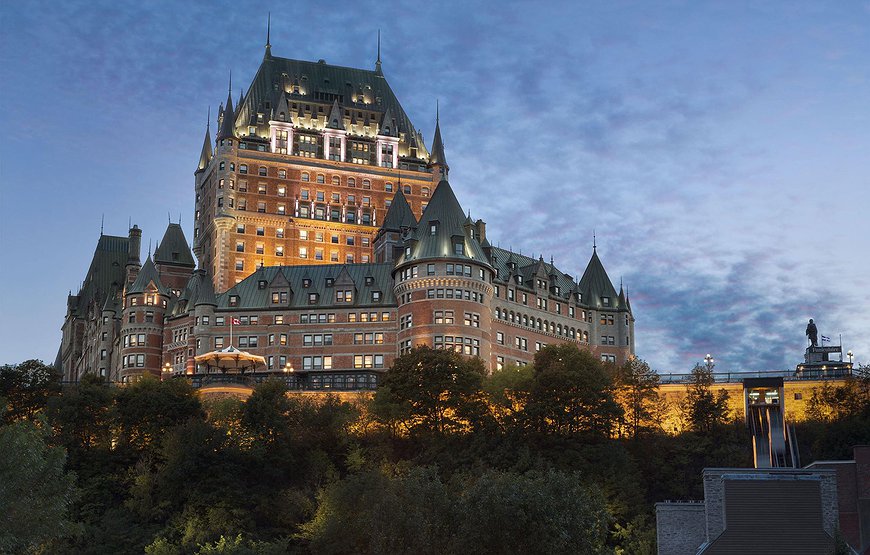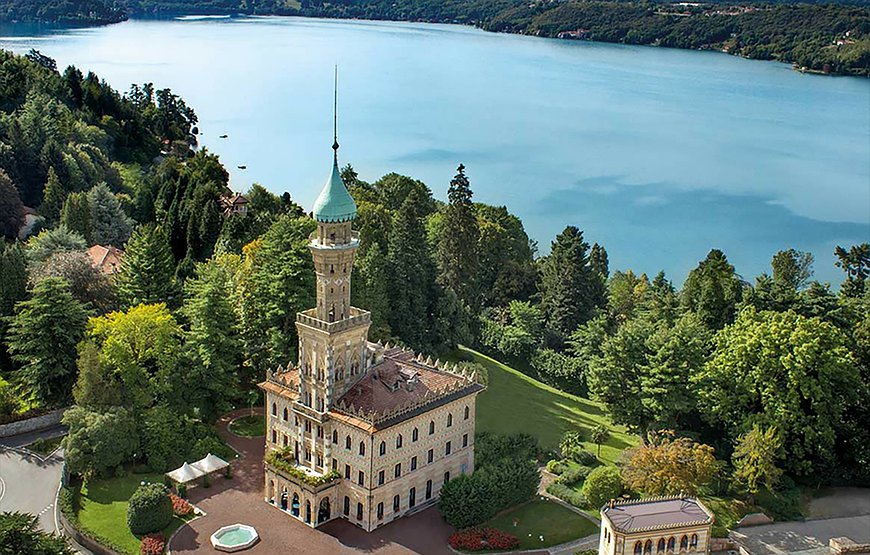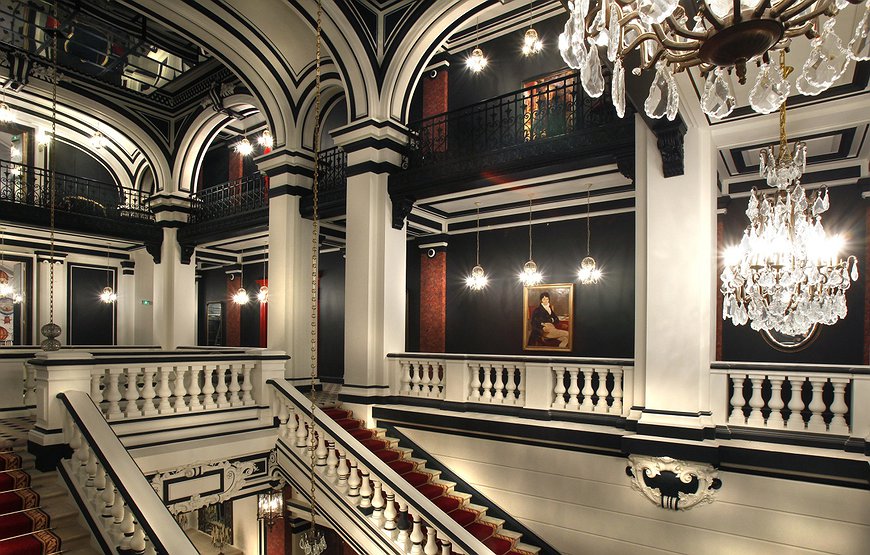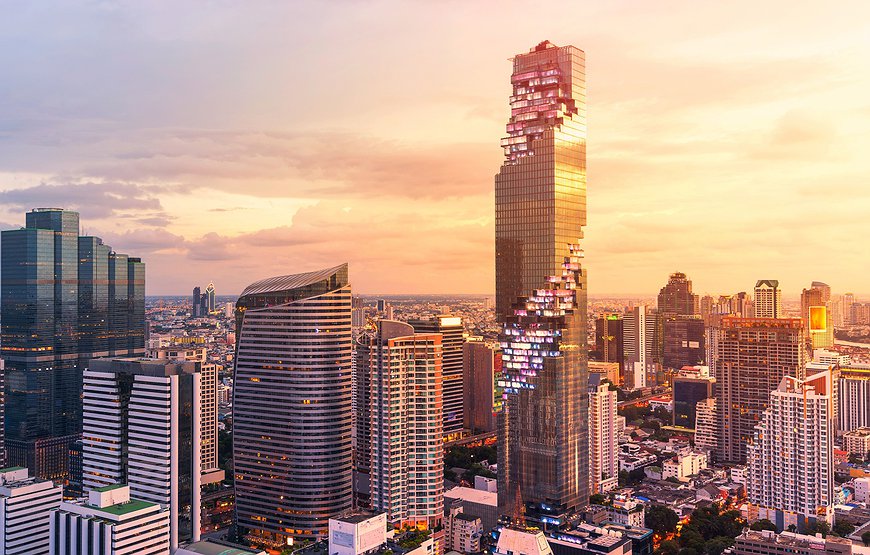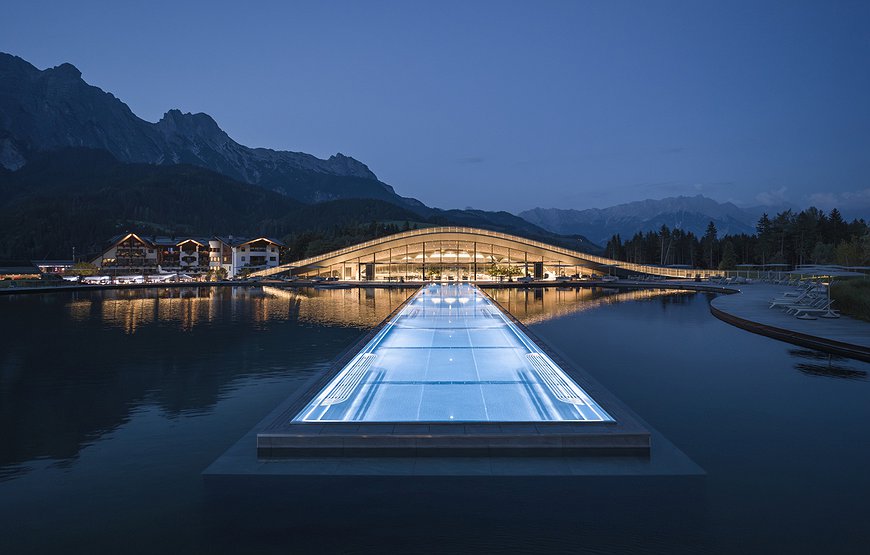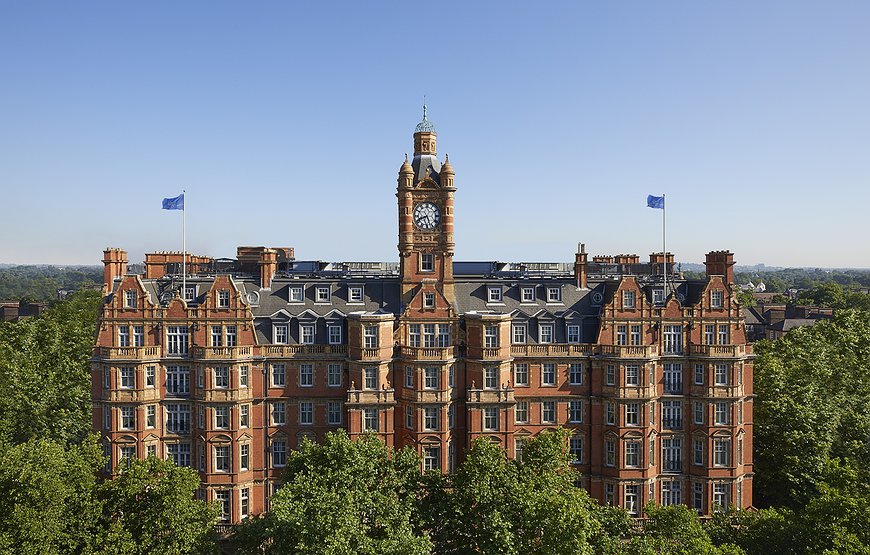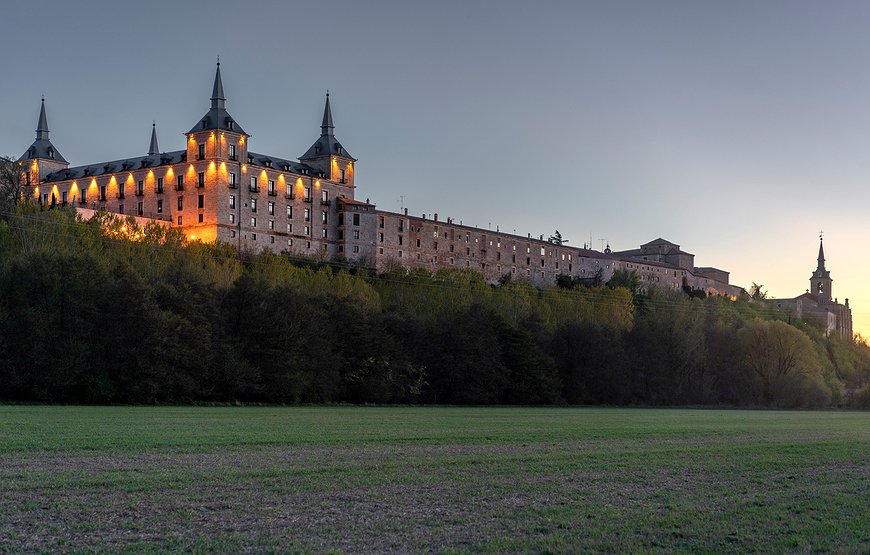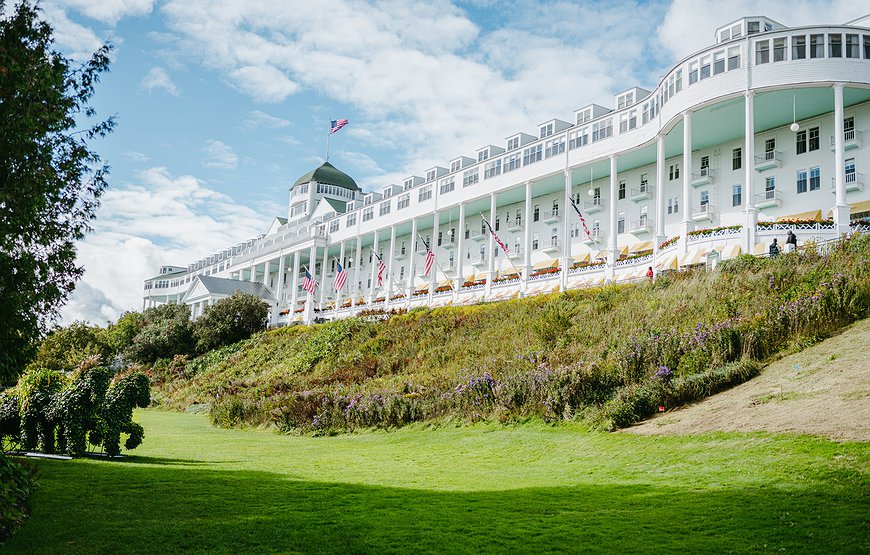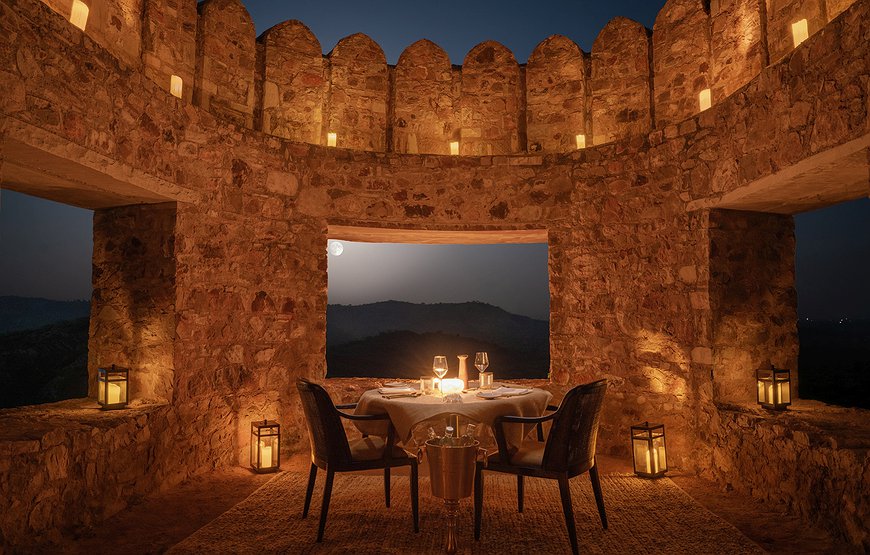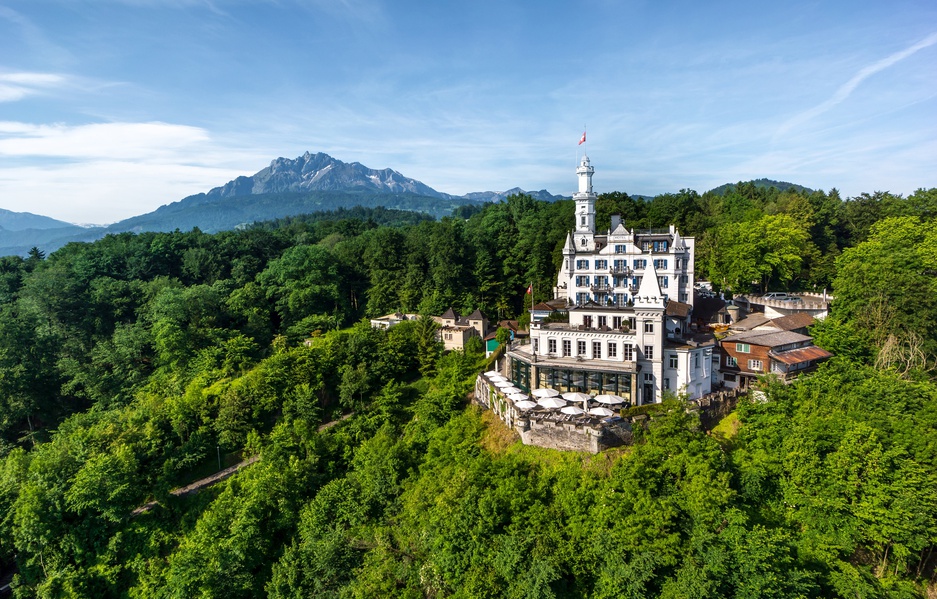
Towering over Lucerne from its hilltop position like something plucked from a Bavarian fantasy, Hotel Château Gütsch is the sort of place that makes you stop and stare from street level. This 19th-century folly castle, modeled after Neuschwanstein, offers what every Swiss hotel promises but few truly deliver: genuinely spectacular views, a funicular that whisks you to the city in 90 seconds, and a complimentary minibar that feels almost radical in a country where a bottle of water can cost as much as lunch elsewhere. Whether you're recovering from Alpine hikes or simply craving Egyptian cotton sheets and a proper cappuccino, this historic property manages to balance Belle Époque grandeur with actual comfort.
Getting There: The 100-Second Ascent
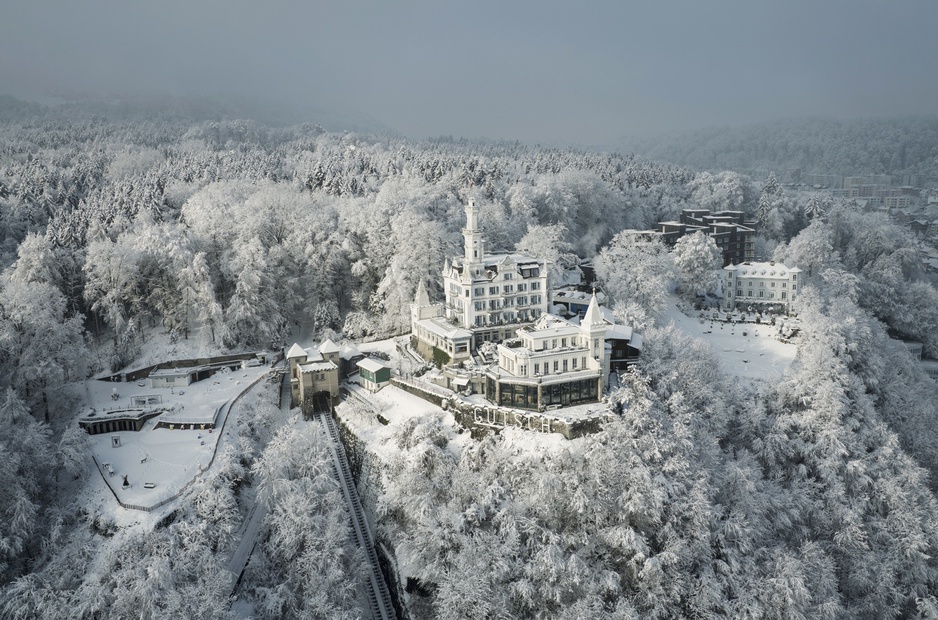
The Gütsch Funicular and the Château
The Gütsch Funicular is more than mere transportation – it's part of the experience. Originally built in 1881 to connect the hotel to Lucerne below, it was converted to automatic operation in 1990, then replaced entirely in 2015 with two modern inclined elevators. The ride takes exactly 100 seconds to cover 170 meters of track and climb 90 meters in height. Each cabin holds eight passengers and runs independently on parallel tracks.
For hotel guests, it's free and operates from 4:30 am to 1:15 am, which means you can stumble back from dinner in the old town without contemplating that long staircase in the dark. The funicular lands you right at the castle entrance, making the isolated hilltop setting feel paradoxically accessible. It's a clever bit of 19th-century infrastructure planning that still works perfectly today.
A Castle Built on Commerce and Calamity
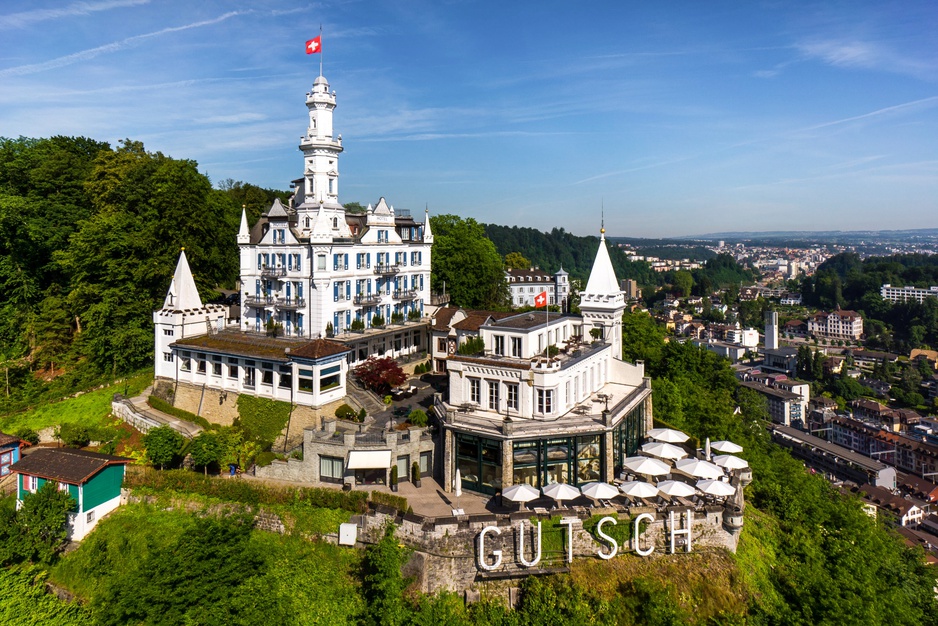
The Gütsch hill has watched over Lucerne since medieval times, when watch fires burned here to warn the city of approaching danger. In 1590, a tower marked the endpoint of the town's fortifications, standing until fire consumed it in 1888. Between those centuries, the site transformed from military outpost to bourgeois pleasure palace.
Burkhard Pfyffer bought the land from the town in 1859 and secured the right to run an inn. Twenty years later, Ignaz Businger purchased it and expanded the operation into a proper hotel. The timing was perfect. Switzerland's transalpine railroad boom was in full swing, and hotels were sprouting on every scenic hilltop across the country. In 1884, the Gütsch Funicular was built to connect the castle to Lucerne and Lake Lucerne below, making the steep climb suddenly manageable for guests in long skirts and stiff collars.
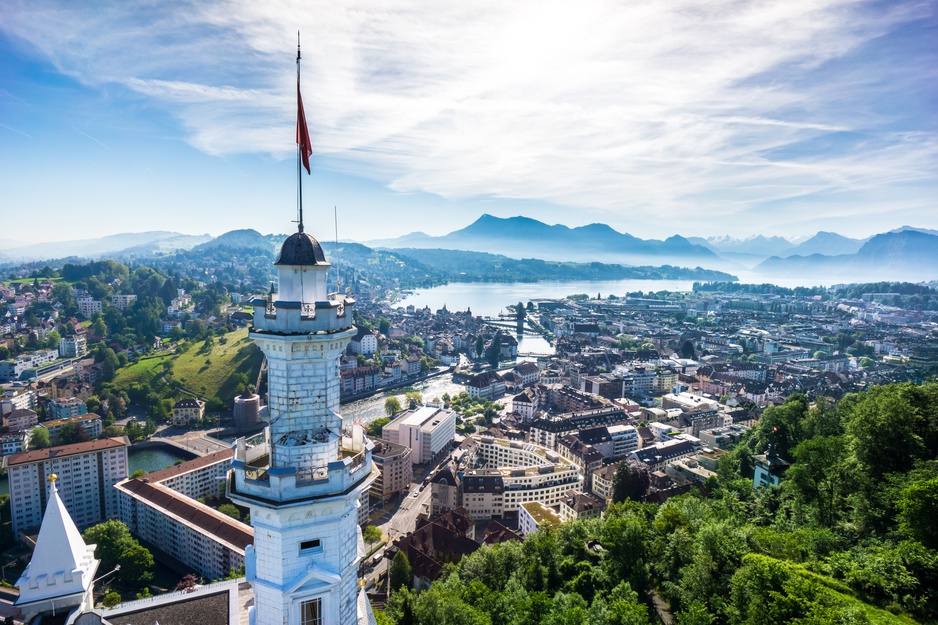
Then came the fire of 1888, which gutted much of the building. Architect Emil Vogt rebuilt it in 1901, this time modeling the structure after Ludwig II's Neuschwanstein Castle in Bavaria. The resulting confection of whimsical towers and pointed roofs has been photographed from every possible angle ever since.
The hotel's history reads like a compressed version of 20th-century Europe. It closed during World War I and stayed shuttered until 1921. During World War II, it housed refugees, returning emigrants, and prisoners of war. Afterward, it returned to hosting the sorts of guests who populate hotel legends: Queen Victoria spent five weeks here in 1868 (technically at a site near the hotel, before the castle itself was built). Conductor Arturo Toscanini stayed regularly during the Lucerne Festival. Henry Kissinger, Madeleine Albright, and conductors Herbert von Karajan, Claudio Abbado, and Ricardo Chailly all passed through. Even William Turner painted Lucerne from this vantage point in 1841.
The American Bar: Where Lucerne Comes to Celebrate
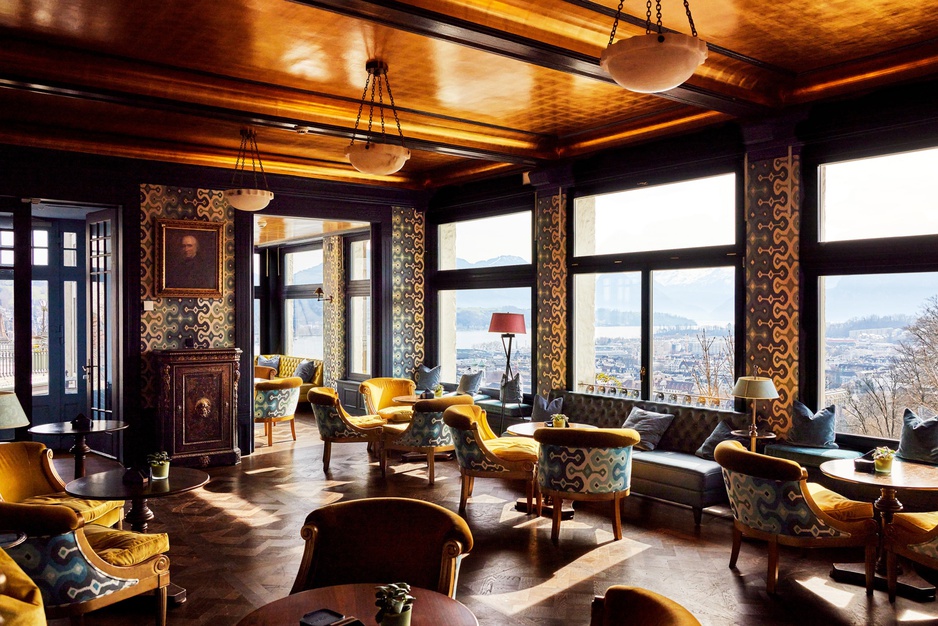
American Bar
The American Bar, formerly known as the Gütsch Bar, has been a Lucerne institution long enough that nobody quite remembers when it started. This is where locals come to mark occasions, where hotel guests settle in after exploring the city, and where the line between tourist spot and genuine neighborhood haunt blurs pleasantly.
Bar manager Mike Müller runs the operation with what the hotel calls "the highest bar culture," which translates to well-made classics, creative cocktails, and a whiskey and rum collection substantial enough to require genuine browsing. The bar serves food from morning until evening – salads, club sandwiches, pasta, ciabattas, desserts – the sort of menu that works whether you want a proper meal or just something to accompany your drink.
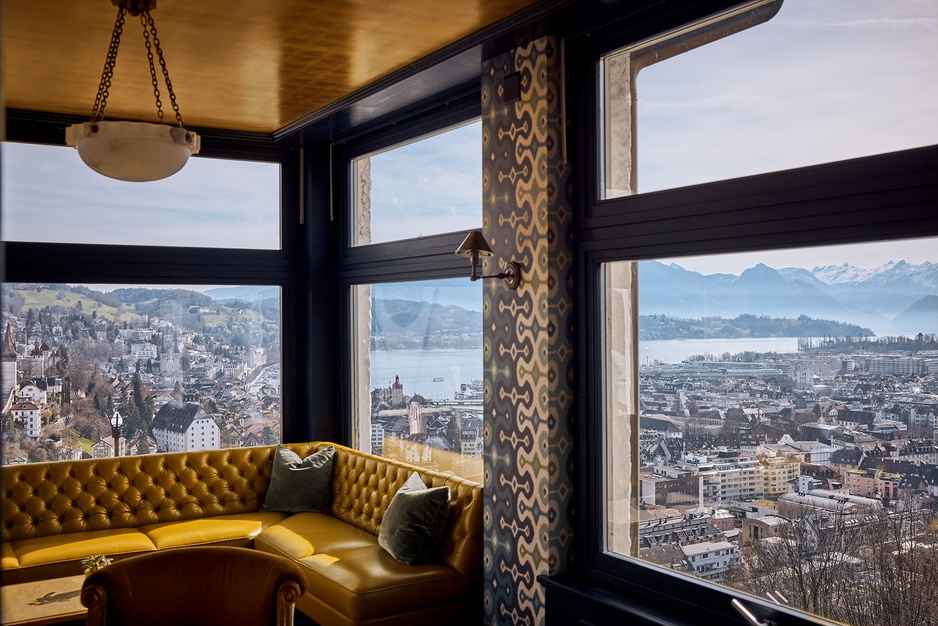
When weather permits, seating spills onto the terrace and into the castle courtyard. The view over Lucerne is omnipresent but somehow never tiresome, the sort of panorama that improves with a cocktail in hand and the day winding down. The bar opens at 10:30 am daily, though from November through late March, it shifts to 4:00 pm openings on Wednesdays.
Restaurant Lumières: Where the View Earns Its Keep
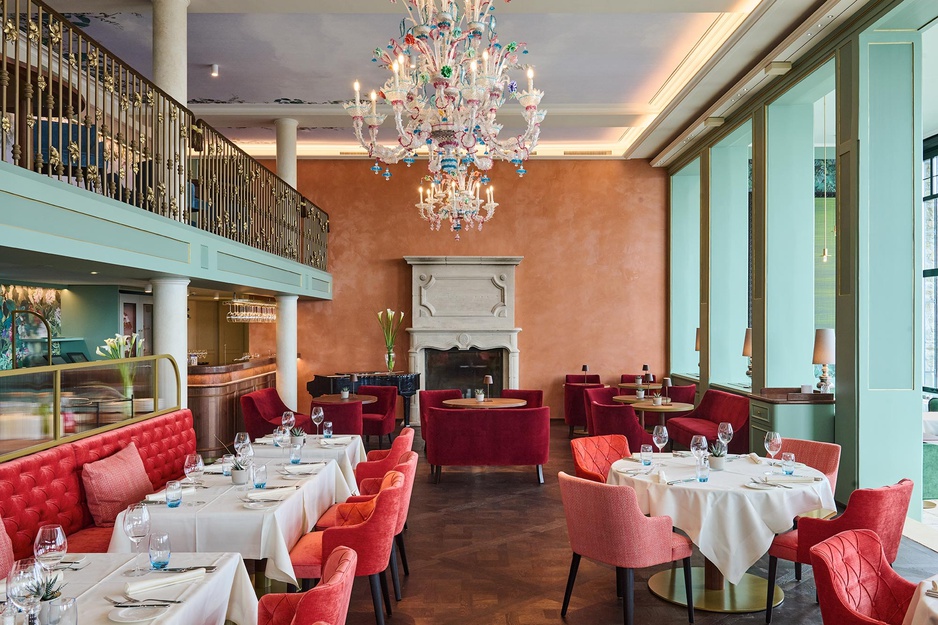
Restaurant Lumieres
The restaurant takes its name from the lights – the sea of city illumination at night, the constantly shifting daylight that makes the landscape glow in different shades depending on the hour. Chef Christoph Bob and his team work with Swiss and Mediterranean cuisine, combining regional ingredients with what the hotel describes as "surprising and innovative creations." This is the modern European hotel kitchen approach: seasonal, sustainable, locally sourced where possible, with vegetarian options that aren't afterthoughts.
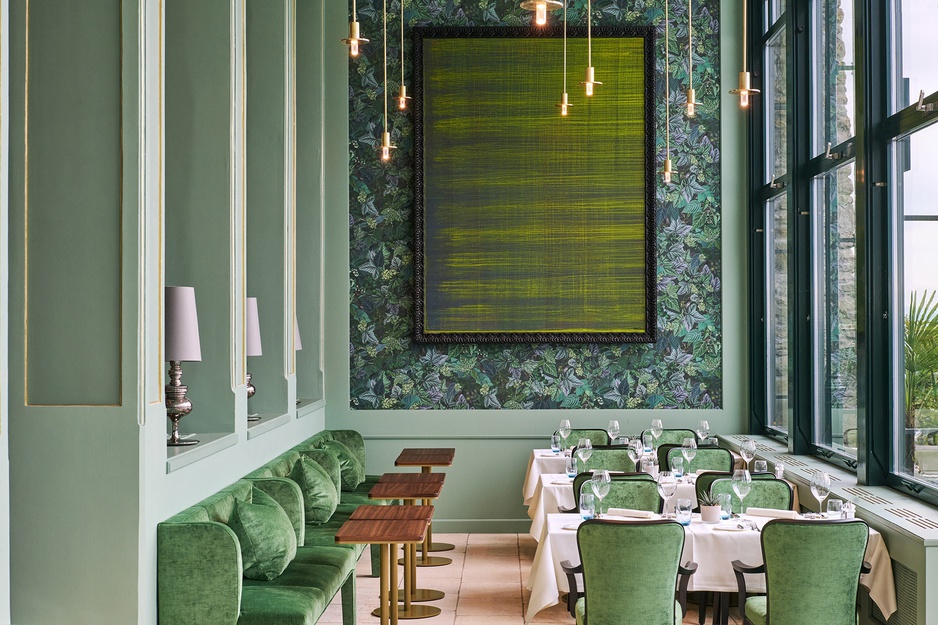
The kitchen operates continuously enough that you won't go hungry. Breakfast runs from 7:00 am to 10:30 am – a proper buffet with freshly baked rolls from a local bakery, regional cheeses and cold cuts, jams, seasonal fruit, and unlimited coffee, tea, and sparkling wine. Lunch service spans noon to 2:00 pm. There's an afternoon window from 2:00 pm to 5:30 pm, then dinner from 6:00 pm to 10:00 pm. The "Time for Lunch" program offers a curated selection meant to make your midday break feel less rushed, more considered.
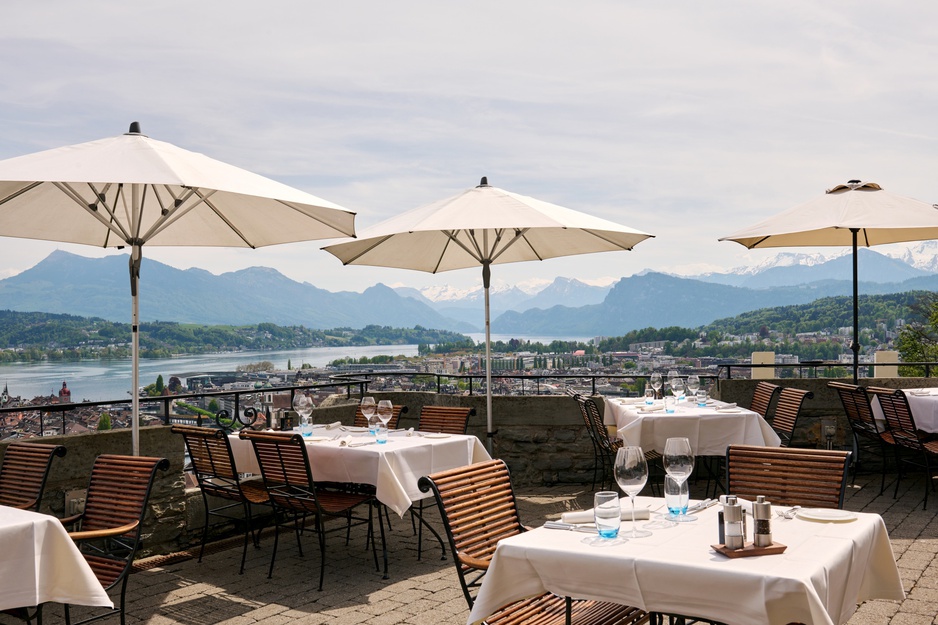
The terrace is where Restaurant Lumières truly justifies its existence. Every window frames the view, but sitting outside with the city and lake spread below transforms a meal into something more memorable.
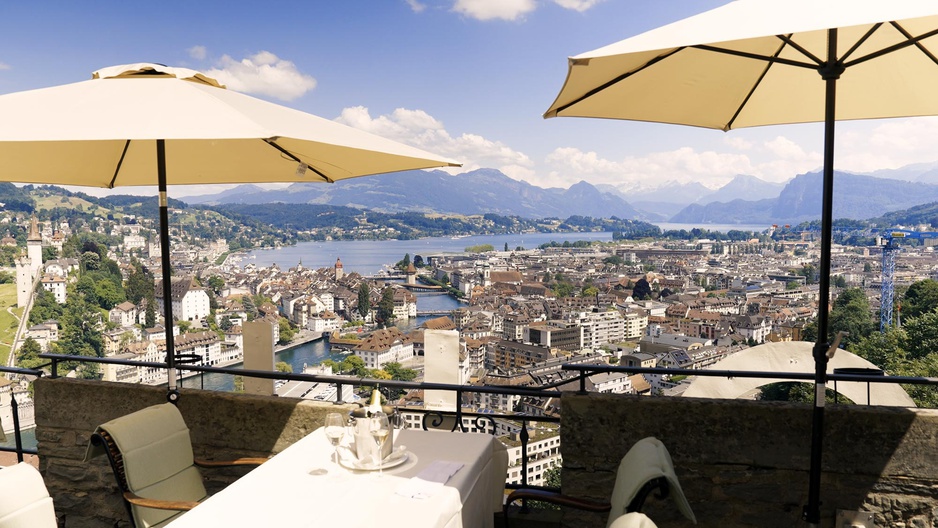
The Swiss flag ripples in the breeze, orange rooftops cascade down the hillside, and the deep blue of Lake Lucerne stretches toward the mountains. String lights warm the courtyard as evening settles in. The classical music that drifts through open windows on summer nights might sound precious in description but works surprisingly well in practice.
The Rooms: Castle Wing or Garden Retreat
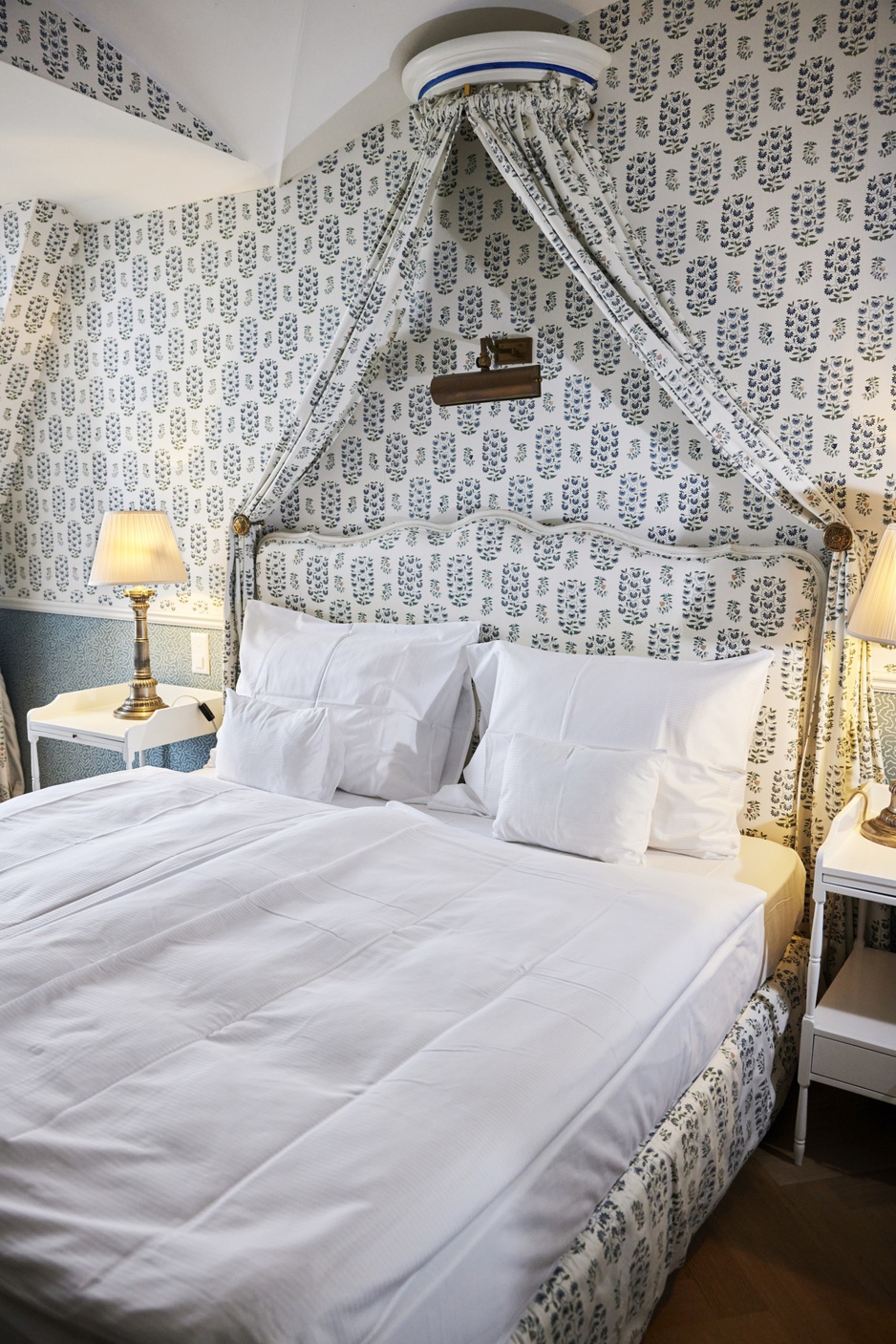
The hotel offers 37 individually designed rooms and suites spread across two distinct sections: the historic castle wing and the newly renovated Orangerie. Your choice comes down to what matters more – Belle Époque romance with original architectural details like ceiling stucco, wood carvings, and hand-painted paneling, or contemporary comfort with air conditioning and modern amenities. The castle wing rooms offer forest views and traditional elegance. The Orangerie suites, inspired by historic garden rooms, provide lake vistas and climate control. Both wings deliver on comfort, though the Orangerie requires navigating steps and isn't wheelchair accessible.
Superior Room with Forest View
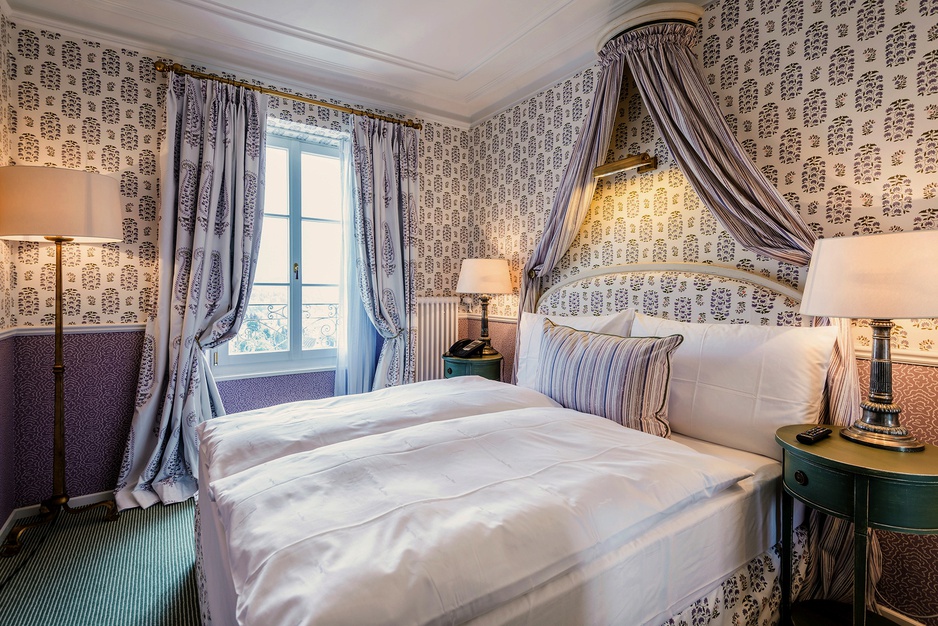
Superior Room
These rooms look out over the Gütsch forest rather than the lake, which means you trade the panoramic city vista for something quieter and greener. Each room is individually designed, spanning 25 to 29 square meters, with beds measuring 180 by 200 centimeters. The marble bathrooms are notably opulent for what are effectively the entry-level rooms.
The forest view won't photograph as dramatically as the lake rooms, but if you're the sort who finds trees more calming than urban vistas, this is your room.
Superior Room Orangery
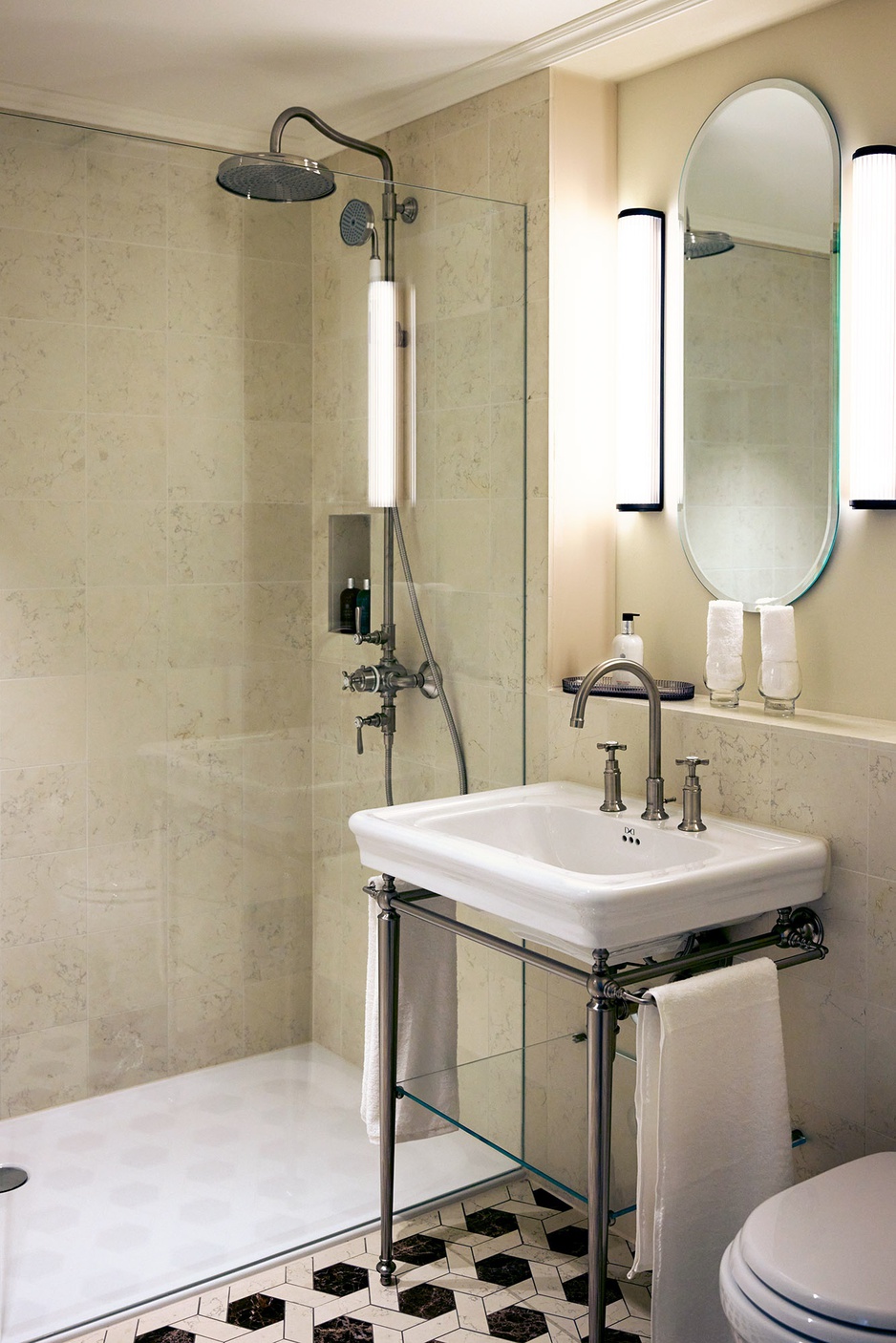
Superior Room Orangery
The Orangery Wing underwent complete renovation, inspired by historic garden rooms. The color palette skews fresh and light, designed to encourage relaxation without trying too hard. These rooms measure 24 to 28 square meters with the same 180 by 200 centimeter beds.
The bathrooms feature walk-in showers rather than tubs. You get air conditioning here, which the forest view rooms lack – worth considering if you're visiting during one of Europe's increasingly common heat waves.
Rachmaninoff Suite
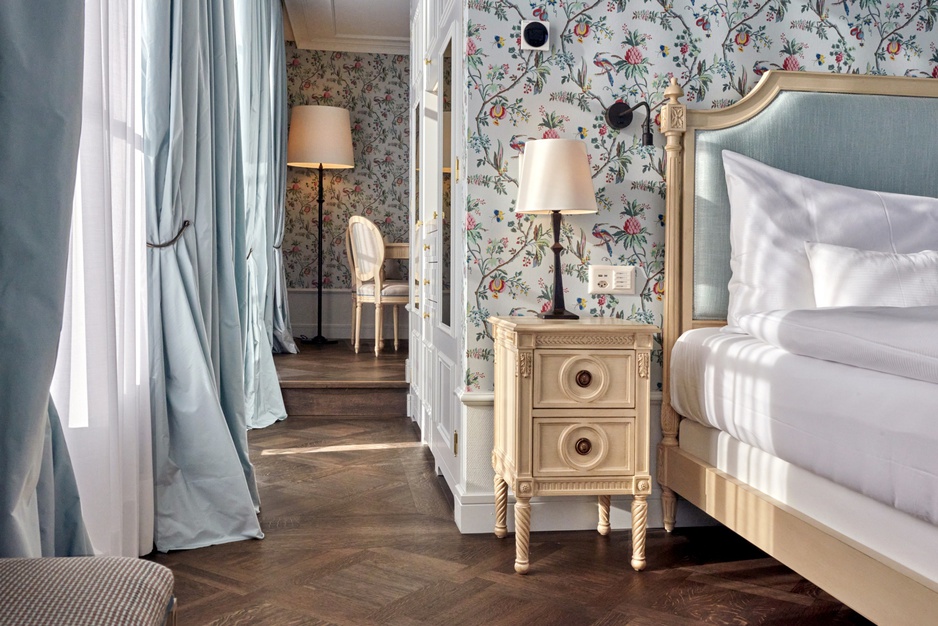
Suite Rachmaninoff
Named after composer Sergei Rachmaninoff, who wrote his Third Symphony on Lake Lucerne's shores in 1935, this suite spans 52 square meters and represents the hotel's top-tier accommodation. It features separate living and bedroom areas, historic parquet floors, and high-quality interior that manages to feel luxurious without tipping into ostentation.
Like the Orangery rooms, the Rachmaninoff Suite requires navigating steps, so it's not barrier-free. But if stairs aren't an issue and you want the full castle experience, this is where the hotel shows what it can do when space and budget align.
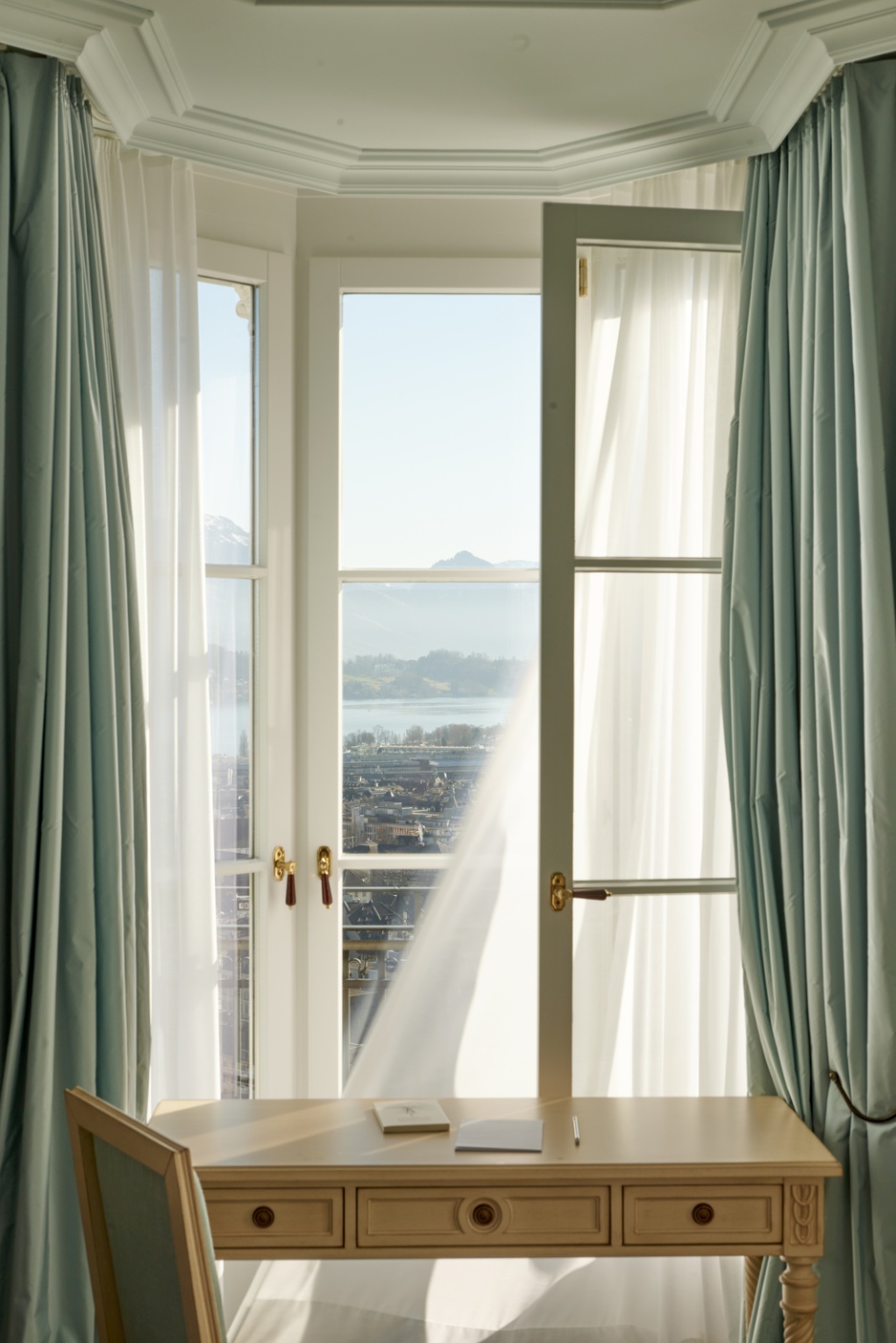
The spacious terrace offers views of both Lucerne and the lake – the sort of private outdoor space where you could credibly spend an entire morning with coffee and a book.
Kanonenstrasse, 6003 Luzern, Switzerland

